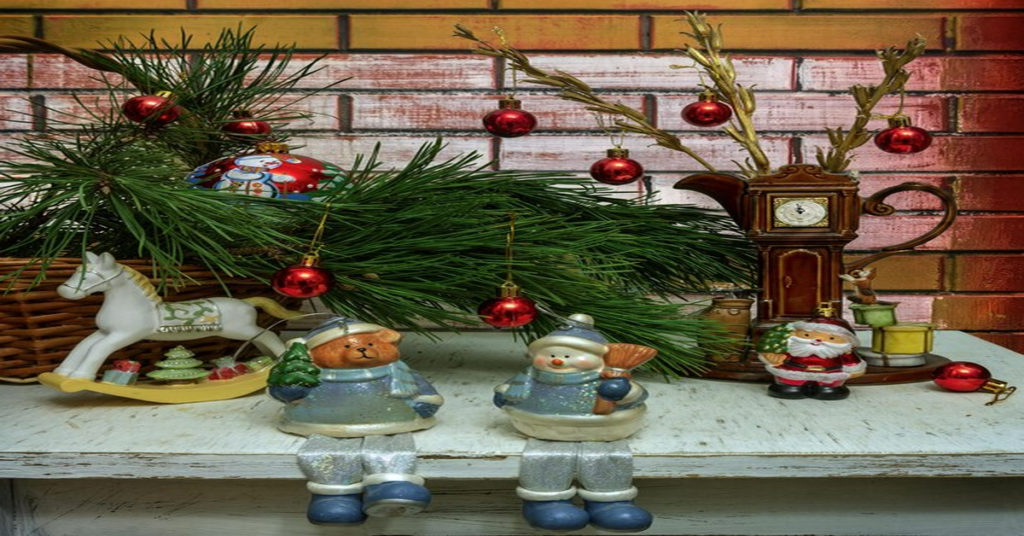When it comes to Christmas traditions, few items hold the nostalgic charm and aesthetic appeal of a ceramic Christmas tree. Popular during the 1970s and 1980s, these iconic decorations have made a powerful comeback in recent years, gracing homes with their vintage beauty and festive glow. Combining nostalgia with artistry, ceramic Christmas trees are not just decorations—they’re collectibles, heirlooms, and conversation pieces that add a warm, vintage touch to holiday celebrations.
This comprehensive guide explores the history, significance, design variations, crafting processes, and tips for caring for your ceramic Christmas tree. We’ll also delve into why these charming holiday staples are regaining popularity today, where you can buy them, and how to incorporate them into modern holiday décor.
The History of Ceramic Christmas Trees: Where It All Began
Ceramic Christmas trees trace their roots back to the 1960s, when hobbyists and pottery enthusiasts began crafting them in ceramic studios across America. The process was simple yet intricate, involving molding ceramic materials into tree shapes and hand-painting them with vibrant holiday colors. Once glazed and fired, these trees were decorated with tiny plastic lights or bulbs that glowed softly when illuminated.
By the 1970s, ceramic Christmas trees became a widespread holiday decoration, especially among families who wanted to personalize their decorations through hand-painted details. They were often used as centerpieces on tables, mantels, and shelves, creating a festive ambiance without the need for an actual tree. Studios and ceramic shops hosted “paint-your-own-tree” workshops, where people gathered to design their custom trees, making the experience a social and creative event.
However, as artificial Christmas trees and other modern decorations gained traction in the 1990s, the popularity of ceramic Christmas trees faded—until recently.
The Resurgence of Ceramic Christmas Trees: Why Are They Popular Again?
Ceramic Christmas trees have surged back into the spotlight, thanks to a combination of nostalgia, craftsmanship, and changing décor trends. Here’s why:
- Nostalgia: Many millennials and Gen Xers have fond memories of seeing these trees in their grandparents’ or parents’ homes. The resurgence is driven by a desire to reconnect with those cherished memories.
- Vintage Aesthetic: The growing appreciation for vintage and retro décor has made these trees a popular addition to homes, blending seamlessly with mid-century modern interiors.
- Customization: Modern ceramic trees are available in various colors and sizes, offering personalized options for those who want a unique holiday centerpiece.
- Durability: Unlike fresh trees or other temporary decorations, ceramic Christmas trees are built to last, making them a worthwhile investment and family heirloom.
- Compact Design: For those who live in small apartments or have limited space, ceramic Christmas trees provide the perfect alternative to large, space-consuming Christmas trees.
Design Variations of Ceramic Christmas Trees
Today’s ceramic Christmas trees come in a wide variety of designs, sizes, and finishes. Here are some of the popular variations you can find:
1. Classic Green Trees
- These are the most iconic designs, featuring hand-painted green “branches” and multicolored plastic bulbs. Often, a star sits atop the tree, adding a magical finishing touch.
2. Modern White Trees
- White ceramic trees have grown in popularity due to their clean, minimalist look. They blend perfectly with contemporary interiors and neutral holiday color palettes.
3. Snow-Dusted or Glitter Trees
- Some trees come with “snow” detailing or a sparkling glaze to give them a frosty, winter wonderland vibe.
4. Pre-Lit LED Trees
- Many modern ceramic Christmas trees come with built-in LED lighting, offering vibrant illumination without the need for external light sources.
5. Themed and Customizable Trees
- From candy-cane-inspired designs to trees adorned with miniature ornaments, themed ceramic trees cater to a wide range of personal tastes.
The Crafting Process of Ceramic Christmas Trees
Crafting a ceramic Christmas tree involves several meticulous steps to achieve the perfect balance of durability, detail, and vibrancy. Here’s a breakdown of the process:
1. Molding
- The base of the tree is typically created using a mold filled with liquid ceramic clay or slip. Once the clay hardens, it forms the iconic tree shape.
2. Drying
- The molded clay is left to dry completely, often for several days, to remove moisture and ensure durability before firing.
3. Firing (Bisque Stage)
- The dried clay is fired in a kiln at high temperatures, transforming it into a solid, porous ceramic piece ready for decoration.
4. Painting and Glazing
- Hobbyists and professionals alike can paint the bisque-fired tree using glazes or acrylic paints. Popular color choices include green, white, and metallic finishes.
5. Second Firing
- After the painting and glazing process, the tree is fired again to set the color and glaze, giving it a glossy, polished look.
6. Adding Lights and Decorations
- Once the ceramic tree is ready, small plastic bulbs, LED lights, or other embellishments are added, creating the signature glowing effect.
How to Incorporate a Ceramic Christmas Tree into Your Holiday Décor
Ceramic Christmas trees are incredibly versatile and can be displayed in a variety of settings. Here are some creative ideas to showcase your tree:
- Centerpiece for Dining Tables: Use a ceramic tree as a centerpiece on your holiday dining table. Surround it with candles, pine cones, or greenery for an elegant touch.
- Mantel Display: Pair your ceramic tree with stockings, garlands, and other festive decorations on your fireplace mantel.
- Window Displays: Place smaller ceramic trees in windowsills to create a festive ambiance visible from both inside and outside your home.
- Bookshelves or Side Tables: Add a pop of holiday cheer to your living space by placing a ceramic tree on a side table or bookshelf.
- Grouping for Visual Impact: If you have multiple ceramic trees, group them together in different sizes and colors to create a stunning holiday display.
Caring for Your Ceramic Christmas Tree
Proper care ensures your ceramic Christmas tree stays in excellent condition for many holiday seasons to come. Follow these tips:
- Cleaning: Dust your tree regularly using a soft, dry cloth. Avoid using water or harsh cleaning agents that could damage the glaze.
- Storage: Store your ceramic tree in its original packaging or a sturdy box with padding to prevent breakage.
- Handling: Handle the tree carefully, especially when adding or removing bulbs and lights.
- Check the Lighting: If your ceramic tree has built-in lighting, ensure the wiring and bulbs are in good condition before displaying it.
Where to Buy Ceramic Christmas Trees
Ceramic Christmas trees are available in a variety of places, from local craft stores to online marketplaces. Here are some options:
- Local Ceramic Studios: Many ceramic studios offer workshops where you can paint and customize your own tree.
- Online Retailers: Websites like Amazon, Etsy, and Wayfair offer a range of ceramic trees in different sizes and styles.
- Antique Shops and Thrift Stores: If you’re looking for vintage or authentic 1970s trees, local antique shops and thrift stores are worth exploring.
- Holiday Markets: During the holiday season, many local markets and fairs feature handcrafted ceramic Christmas trees.
Conclusion: A Classic Decoration for Modern Celebrations
Ceramic Christmas trees are more than just decorations—they’re reminders of cherished memories and symbols of holiday traditions passed down through generations. Their ability to blend timeless charm with modern design ensures they will remain a staple in holiday décor for years to come. Whether you’re rediscovering the magic of these trees or introducing them to your home for the first time, their nostalgic glow is sure to make your holidays brighter.
FAQs
1. What is the history behind ceramic Christmas trees?
Ceramic Christmas trees became popular in the 1960s and 1970s when they were handcrafted and painted in ceramic studios. They experienced a resurgence in recent years due to their nostalgic appeal.
2. How are ceramic Christmas trees made?
These trees are made using a mold filled with liquid ceramic clay, which is then dried, fired, painted, and glazed before being decorated with lights.
3. Can I customize my ceramic Christmas tree?
Yes! Many ceramic studios offer paint-your-own-tree workshops where you can personalize the design, colors, and embellishments.
4. Are ceramic Christmas trees safe to use with LED lights?
Yes, modern ceramic trees often come with built-in LED lights, which are energy-efficient and safer compared to traditional bulbs.
5. Where can I buy authentic vintage ceramic Christmas trees?
You can find vintage ceramic trees at antique stores, thrift shops, or online marketplaces like eBay and Etsy.
6. How do I store my ceramic Christmas tree after the holidays?
Store it in a sturdy box with padding to protect it from damage. Make sure to clean it before storage to remove dust.







